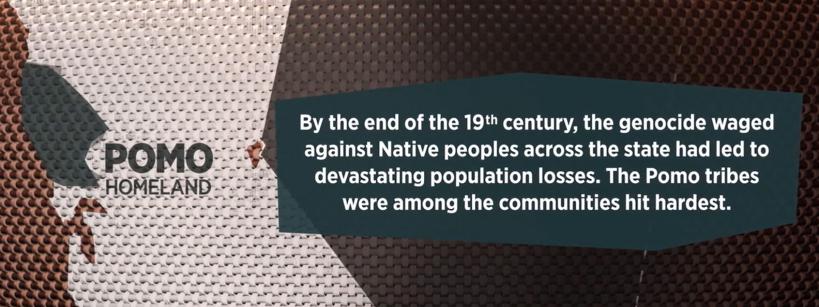Educational Video
The Pomo Genocide video will introduce students to the devastating population losses and injustices that the Pomo people, a Native Californian community, experienced after colonization through census records, maps, newspaper text, and quotes.
CA HSS 8.8.2
CA HSS 8.8.5
CA HSS 8.12.2
Video Resources
Coming Soon!
Teaching Tips for Different Learning Environments
Whole Class In-Person Learning:
Activate: Activate students’ prior knowledge.
- Ask the whole class to share what they think the words colonization, genocide, and injustice mean. Then discuss what these words mean with them.
Investigate: Students will learn how genocide led to the population losses that the Pomo community experienced.
- Show the Pomo Genocide video to the whole class.
- Pause the Pomo Genocide video at the suggested times below so that students can take notes on the estimated Pomo population at different dates, the events that happened at various dates, and the injustices that the Pomo community experienced.
- :06, :34, :44, :56, 1:35, 1:43, 1:57, 2:15, 2:23, 2:31, 2:43, 2:57, 3:07, 3:20, 3:35, 3:48, 4:02, 4:19, 4:34, 4:46, 4:57, 5:12, 5:21, 5:35, 5:45, and 5:56
Create: Students will create a timeline.
- Have students work with a partner or a small group to create a timeline showing the estimated Pomo population at different dates and the events that happened at various dates from the video.
Demonstrate: Students will demonstrate their learning by sharing their work with others.
- Have partners or small groups share their timelines through a gallery walk.
Whole Class Distance Learning:
Follow Whole Class In-Person Learning above. Students can have the option of watching the Pomo Genocide video and taking notes independently. Instead of having a gallery walk, partners or small groups can post their timelines on Padlet.
Links to Associated Resources




